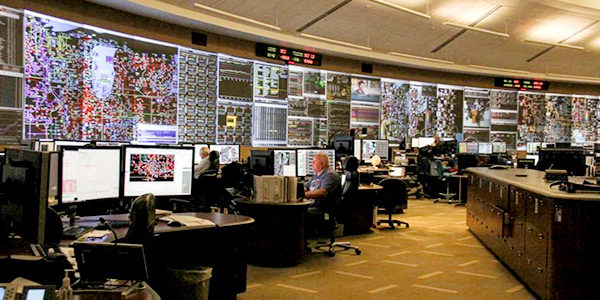By Amanda Durish Cook
MISO may have to devise new lines of communication, rethink its data management and alter dispatch rules to give distributed energy resources access to its markets.
Those opinions were laid out at a special Nov. 26 workshop focusing on DER assets’ communication and visibility to the MISO control room.
DER Program Manager Kristin Swenson said the RTO may have to develop new means of communication to provide visibility into distributed resources in the footprint.
“We’ve been pretty locked into this [Inter-Control Center Communications Protocol] world,” she said, referring to the predominant system of real-time data exchange for RTOs and ISOs. “There are a lot of other communication options.” She added that MISO will have to ensure the cybersecurity of communication with DERs and aggregators.
Wisconsin Public Service Commission policy analyst Ryan Kohler, who also participates in the Organization of MISO States, said collecting DER insights is particularly challenging considering that no standardized DER data policy exists across states or RTO/ISOs.
“There’s a cost to this; there’s a question of how all these [data-gathering methods] are going to work together,” Kohler said. “As penetration levels increase, it’s going to be essential that we know what’s going on.”
Kohler said DER operators are going to have to predict their resources’ behavior, be able to react in real time, and maintain forecasts for and historical data of their resources.
“It does take a specialist to get information like this. … So we’re putting the call out. It’s going to take a lot of folks with the same knowledge,” Swenson said, asking that MISO’s utilities make sure their representatives at DER workshops specialize in DER operations.
Kohler also said the question remains about what data DER operators need to share with RTO/ISOs in order for them to be able to respond to dispatch instructions.
Advanced Energy Management Alliance Executive Director Katherine Hamilton said aggregators will help DERs meet ISO/RTO dispatch instructions and facilitate communication.
Swenson said that while MISO currently receives real-time load information, it receives no detailed or real-time information directly from devices or aggregations.
“We’re interested in how that evolution will affect us,” she said, adding that MISO is asking how much data it can realistically handle without being overwhelmed.
Answer in Aggregate?
Aggregator Enel X North America’s Nicholas Papanastassiou said his company already offers virtual power plants with market optimization engines that crunch weather data, site-specific costs and price forecasts to update market offers to RTOs. He said virtual power plants provide services that are “beyond simple telemetry.”
“Many other industry players have similar forms of this,” he told MISO staff and stakeholders.
Papanastassiou said it’s best if DERs are allowed to participate both in the retail and wholesale markets as much as possible, though he allowed that some issues might arise if DERs are held to an RTO’s must-offer requirement when they planned on not being available.
MISO Managing Assistant General Counsel Michael Kessler said the RTO’s must-offer requirement applies to capacity resources. Currently, MISO resources are barred from providing capacity if they also furnish output to areas outside the RTO.
Kessler said MISO hasn’t yet examined how a DER would become a capacity resource.
“We’re going to have to explore how these dual participations will line up with essential reliability services,” Kessler said.
Voltus CEO Gregg Dixon said the issue isn’t technology and metering, but dual rulesets from the states and RTOs.
“This isn’t rocket science,” he said of the technology involved for metering. He added that states should invite aggregated DERs into the wholesale market, where the states can benefit from both wholesale market resource adequacy credit and their DERs handling local needs.
“States sign up for the socialized benefits of a wholesale market. Yet, states don’t take full advantage of the benefits,” Dixon said.
MISO said its “key” future issue is aggregation. The RTO currently doesn’t allow aggregation beyond its pricing nodes or local balancing authorities, depending on how demand response resources have registered. And so far, only MISO’s Type II DR resources are eligible for dispatch, but they must be at least 1 MW in size.
Market design engineer Congcong Wang said a large aggregation across multiple transmission and distribution interfaces would affect transmission flow calculations, the RTO’s congestion management and create locational pricing inaccuracies.
MISO is home to about 31 DER pilot programs. (See OMS: 4.5 GW of Unregistered DERs in MISO.)
Mission:data President Michael Murray predicted that MISO will end up using “hybrids” of metering and data-gathering practices, given its large footprint of different state jurisdictions and utility models. He said it was difficult to imagine the RTO imposing just one metering type. Mission:data is a 35-member nonprofit that encourages customer data access policies across the country.
“A lot of these utilities are becoming IT platforms, and they need to be regulated like IT platforms,” Murray said, adding that states might consider designating centralized repositories for information.
“We’re all kind of dealing with this new frontier of working together,” Minnesota Public Utilities Commission DER specialist Michelle Rosier said.
The DER workshop was one of several MISO has hosted over 2018 and 2019, with plans to host more in 2020.
Swenson said MISO’s next DER workshop on Feb. 25 will focus on how the resources will impact the current transmission planning process.
“Because of the changes we’ve seen to the distribution system … our planning horizons may take too long. They’re very, very long,” Swenson said.
MISO also plans to hold another workshop in March on how DERs might contribute to its markets in the future.




